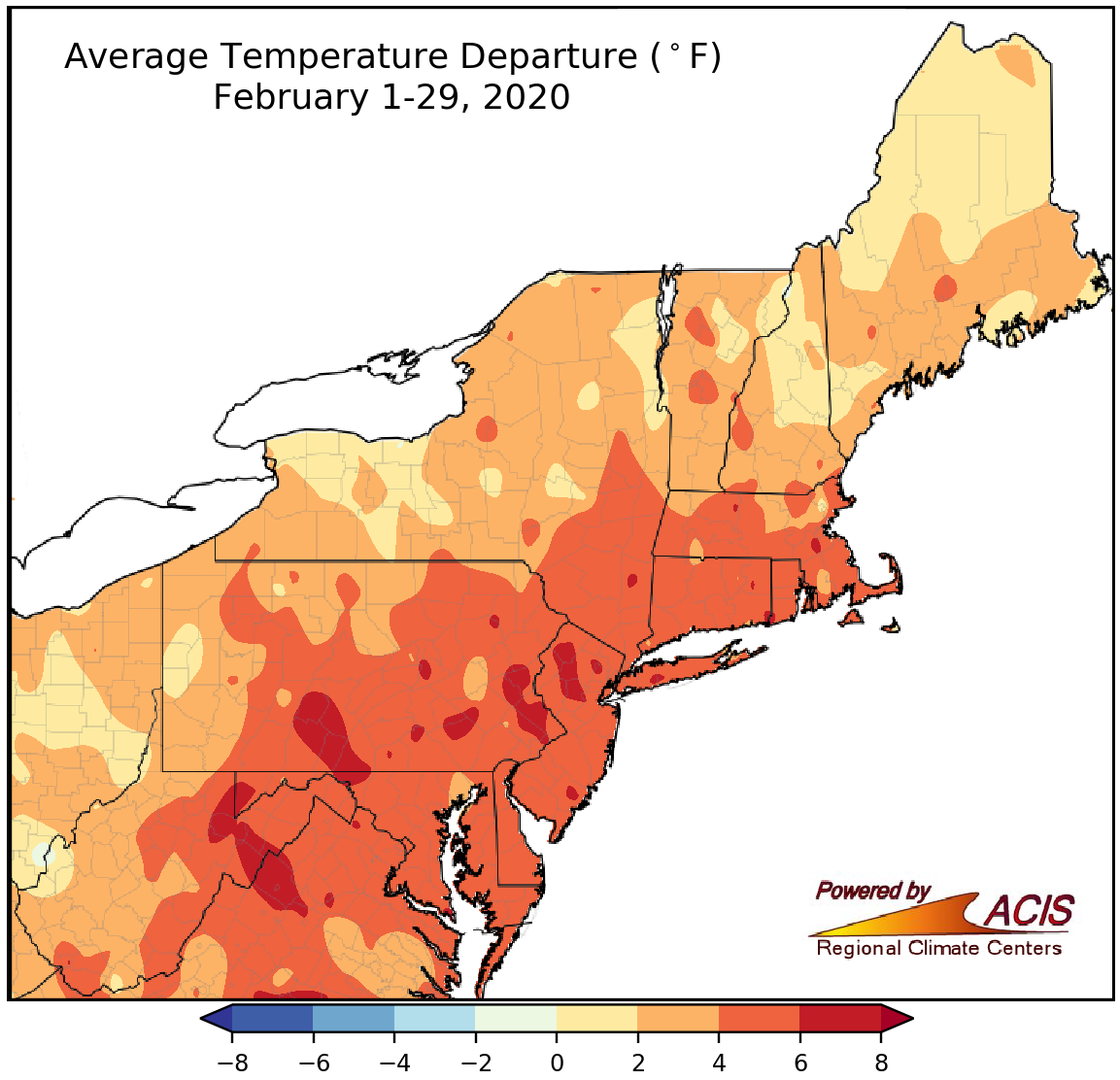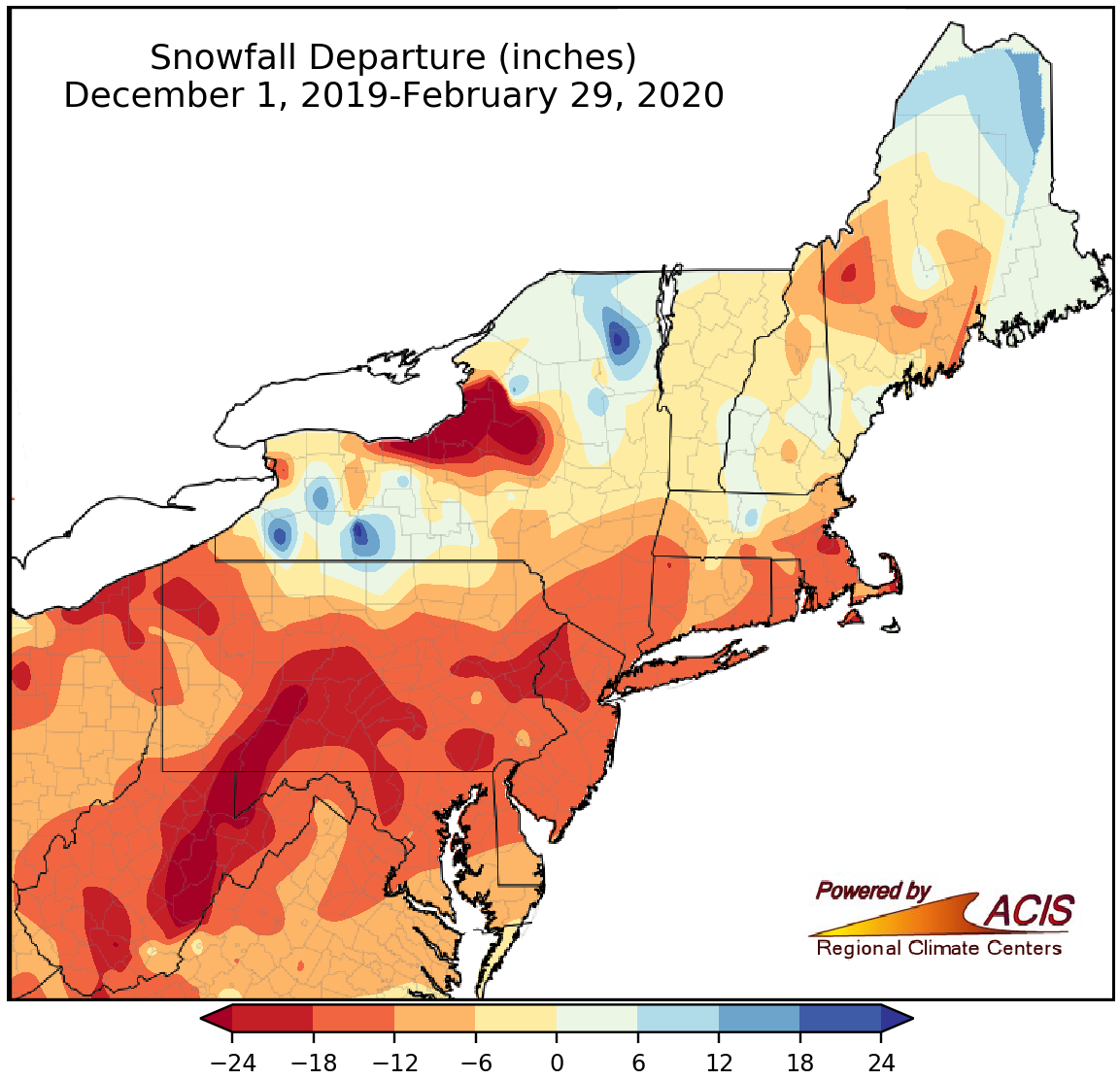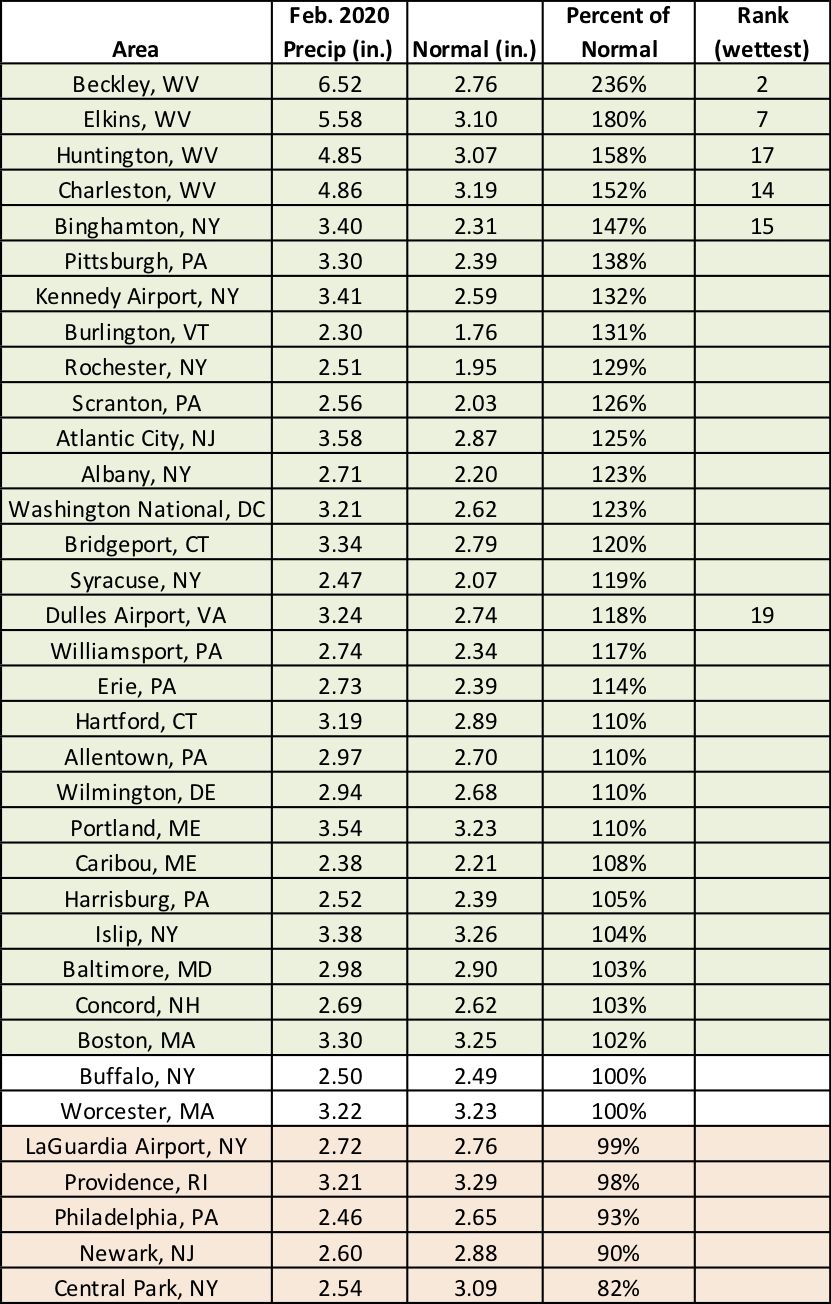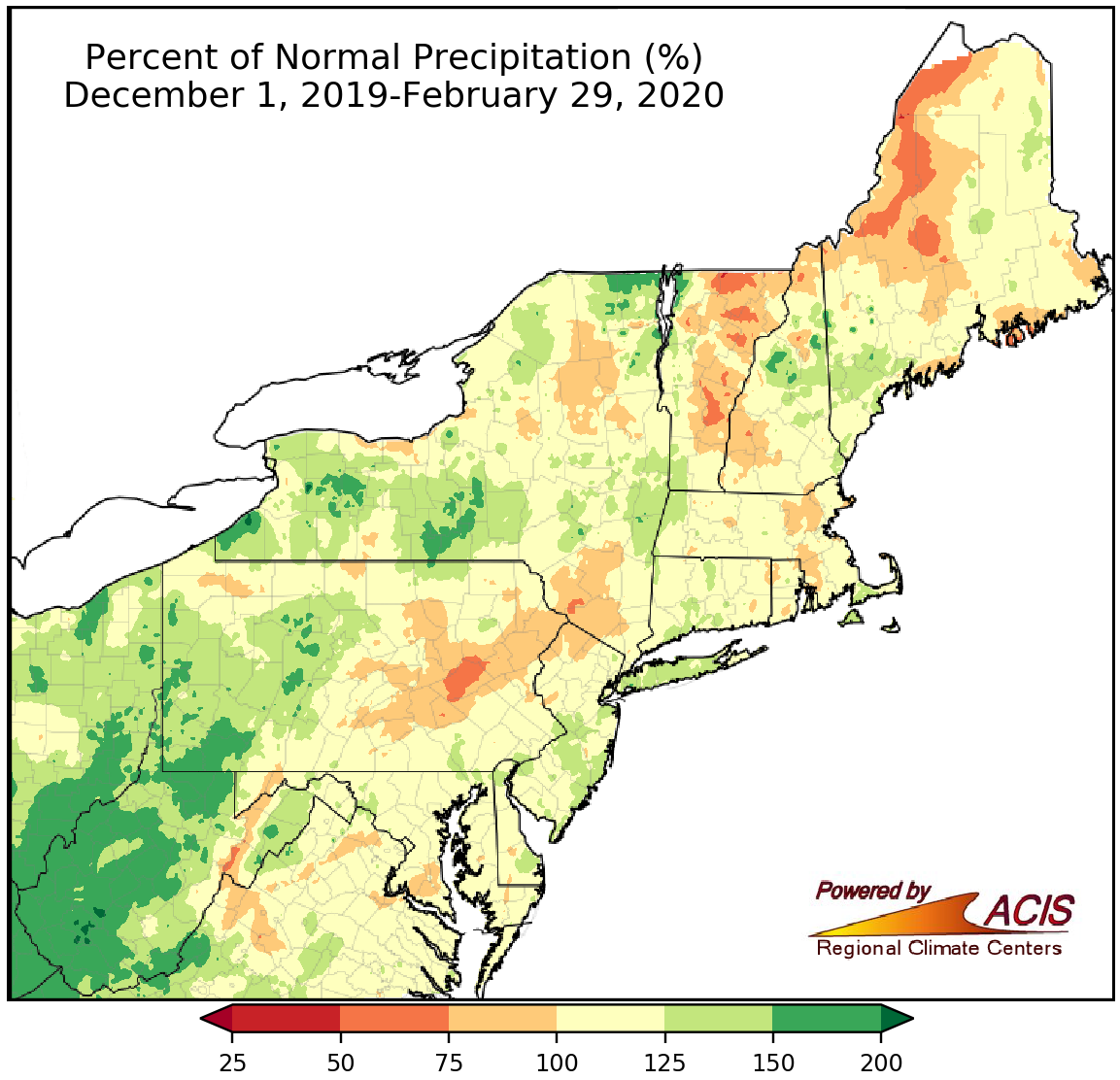Where Was Winter?
February average temperatures were up to 8°F above normal.
February was a mild month for the entire Northeast. Temperatures were as much as 8°F above normal, with the greatest departures generally in Pennsylvania, Maryland, New Jersey, and West Virginia. Twenty-five of the 35 major climate sites had one of the 20 warmest Februarys on record, with departures of up to 7.9°F above normal in Allentown, PA.
All 35 major climate sites were warmer than normal in February.
Winter average temperatures were as much as 8°F above normal.
The winter season also averaged out to be milder than normal for the entire Northeast, with average temperatures up to 8°F above normal. The greatest departures were generally in West Virginia. Allentown had its warmest winter on record, and another 33 major climate sites ranked this winter among their 20 warmest on record. Average temperatures at the major climate sites were up to 6.6°F above normal (in Allentown).
Allentown had its warmest winter on record, and another 33 major climate sites ranked this winter among their 20 warmest on record.
February snowfall ranged from 12 inches below normal to more than 12 inches above normal.
This mild February was one of the least snowy Februarys on record for many sites in southern and eastern parts of the region. Twelve of the 35 major climate sites had their least snowy February on record. Another eight sites ranked it among their 15 least snowy Februarys on record. In some of these areas, snowfall deficits ranged from 6 to 12 inches below normal. Several sites didn’t even see measurable snowfall.
However, some sites in northern parts of the region and near Lakes Erie and Ontario saw a snowfall surplus of 6 to more than 12 inches this February. For lake-effect areas, much of that snowfall came during a major lake effect event the last few days of the month. Three major climate sites ranked this February among their 20 snowiest on record.
Twelve major climate sites had their least snowy February on record.
Winter snowfall ranged from more than 24 inches below normal to near normal for most areas.
A majority of the Northeast received less snow than normal this winter, with the greatest deficits of more than 24 inches southeast of Lake Ontario and in higher elevations of western Pennsylvania, western Maryland, and eastern/northern West Virginia. Thirty-two major climate sites had a snowfall deficit, with 18 ranking this winter among their 20 least snowy on record. Snowfall for all 35 sites ranged from 34.4 inches below normal in Elkins to 12.1 inches above normal in Caribou.
Eighteen major climate sites ranked this winter among their 20 least snowy on record.
February precipitation ranged from 50% of normal to more than 200% of normal, with most areas wetter than normal.
February precipitation ranged from 50% of normal to more than 200% of normal, with much of the region wrapping up the month on the wet site of normal. The wettest areas tended to be in portions of southern West Virginia, western Pennsylvania, and western and northern New York. Twenty-eight of the 35 major climate sites had a wetter-than-normal February, with six ranking this February among their 20 wettest.
Twenty-eight major climate sites had a wetter-than-normal February.
Winter precipitation ranged from 50% of normal to 200% of normal, with much of the Northeast being wetter than normal.
While winter precipitation ranged from 50% of normal to 200% of normal in the Northeast, most areas were wetter than normal. Once again, the wettest areas tended to be in portions of southern West Virginia, western Pennsylvania, and western and northern New York. Thirty-three major climate sites had a wetter-than-normal winter, with nine ranking this winter among their 20 wettest.
Thirty-three major climate sites had a wetter-than-normal winter.
For March, NOAA’s Climate Predication Center is indicating an increased likelihood of above-normal temperatures for the entire Northeast. Some western areas of the region could see wetter-than-normal conditions, but equal chances of below-, near-, or above-normal precipitation was predicted for the rest of the Northeast.
March could be warmer than normal for all areas and wetter than normal for areas shaded green.













